Last week I escaped back out into the wide world with a trip to Fisherfield Forest in north-west Scotland. Not actually a forest at all, it’s a wide open area of mountainous back-country that takes a reasonable amount of effort to get into. The mags like to call it ‘the Great Wilderness’, and while that might be over-egging it just a shade, it genuinely is about as remote as you can get on the UK mainland. The stillness was so absolute on some days that I could hear people talking on neighbouring peaks.

If you’re heading that far north, I think you sort of have to regard the journey up as part of the fun. Fortunately my 1999 Volvo V70 estate is a comfortable old girl for a long cruise, stately as a galleon – even if my hands do stick to the steering wheel a bit because it was previously owned by a mechanic and I’ve never been able to get all the ingrained oil out.
I drove seven or so hours, breaking the journey for a bacon sarnie at the Scotch Corner truck stop, a celebratory bottle of Irn Bru at Gretna services and a Philly cheese steak sandwich at the wonderful food wagon at Dalraddy campsite near Aviemore, before stopping in for an evening cup of tea with photographer Graham Niven. The big fellow and I are long-time pals stretching back to some rare old adventures in South America nearly 20 years ago, and he’s been roaming the Highlands all his life for both work and play.
In hushed voices – so as not to disturb a three-year-old who was in bed but DEFINITELY NOT TIRED – we pored over the Landranger map and Graham helped me put some flesh on my skeletal plans, pointing out likely camping spots and talking me through my routes up the mountains.
‘Have you seen the weather forecast?’ he asked.
‘Few days ago. Looked alright last time I checked. Just cloud and a bit of rain.’
He grinned and held up his phone to reveal the BBC weather page and a row of glowing suns stretching right through the week.
From Graham’s place, I set back out again. Gone half nine and sunset seemingly nowhere near. Another hour and a half on the road then a night hidden away in a roadside copse, stretched out in the back of the car. Half the world seems to have bought a gleaming new VW California camper van in the past year, but you can keep them, I say. Up early and a 6am stop at the famous viewpoint looking down towards Loch Maree, sat on the bonnet in a heavy roll-neck jumper with a kettle boiling up on the gas stove. That happy feeling of an adventure ahead.
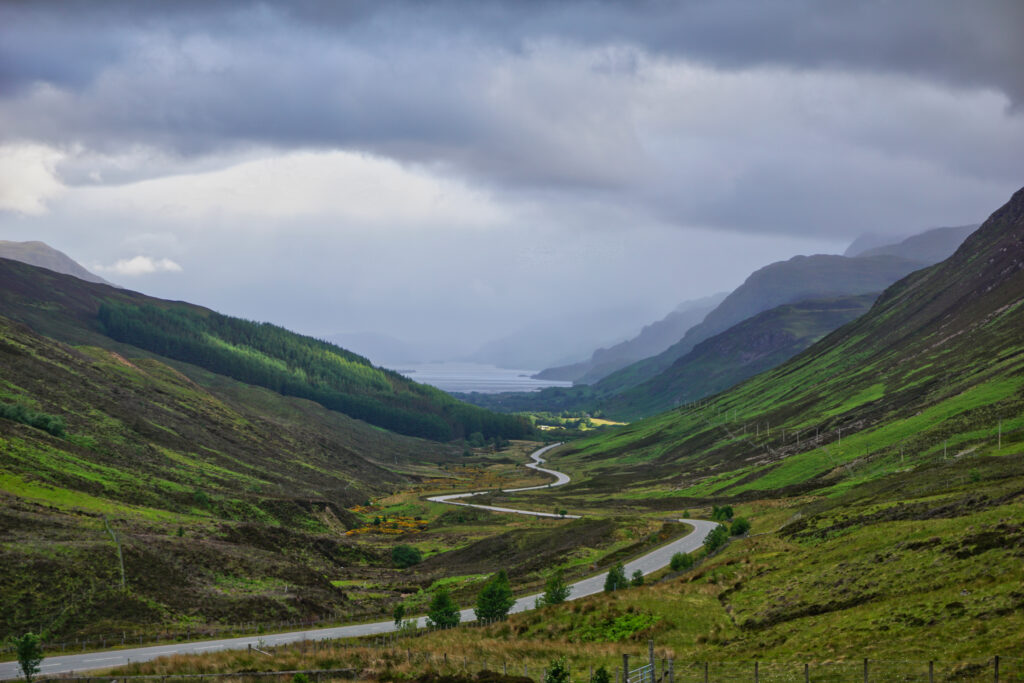
There are a few ways in and out of Fisherfield, but I’d decided to drop the car at Poolewe then walk in via the River Ewe, diverting to snag Beinn Airigh Charr (791m) – which in the event was beset by mist and hooning wind so there wasn’t much of a summit view, save glimpses of the lochs below flickering like puddles of mercury through the rushing cloud. It tried to rain a bit but never really got started, and in fact that was the only remotely inhospitable weather I encountered all week.
By 6pm I arrived at the shore of Fionn Loch, dog-tired after the long journey up and my first mountain day with a decent-size pack on in nearly two years. Fitness and strength were both ropey this time out. From the porch of my tent I looked out at the crumbling old causeway that divides Fionn and Dubh Lochs, and the winding path beyond it that leads up the pass and into Fisherfield proper.
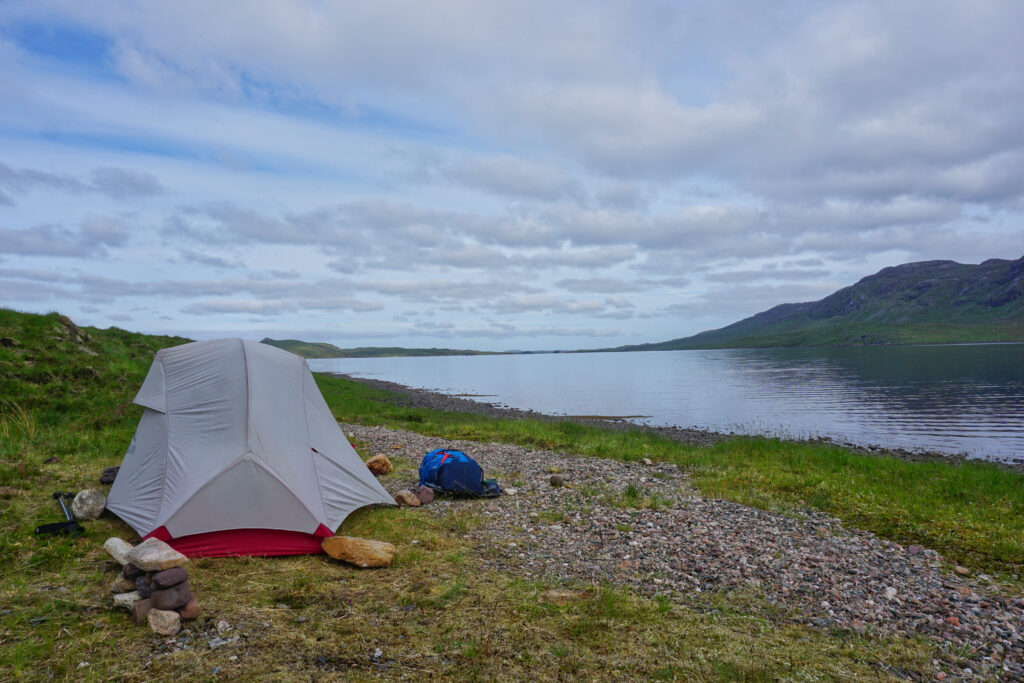
The next day took me through the pass and into an area unlike anywhere I’ve ever been before. Great wrinkled peaks and sheer cliffs, dotted with glittering lochans where fish flopped and splashed in the sunshine. Gouges in the peat revealed serpentine tangles of petrified tree roots, and the leathered skeleton of a long-horned mountain goat lay in the shade of a tree. I stopped for a swim then dried out on a rock with a cup of hot coffee.
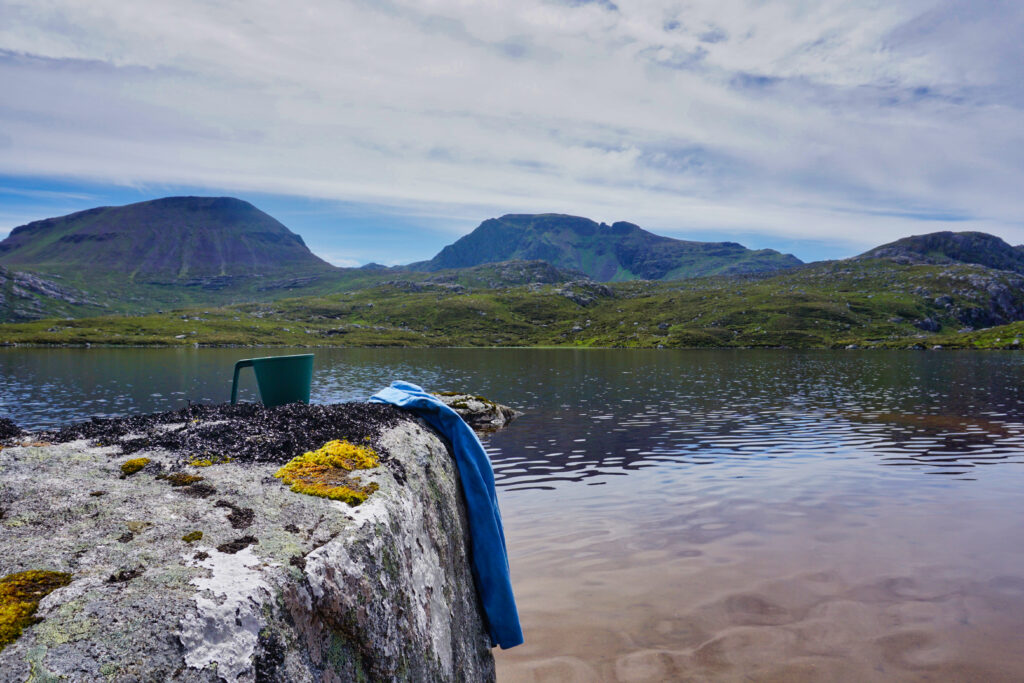
Dropping down into the valley, I circled round to the other side of Fisherfield’s ‘Big Six’ – the hulking mountain circuit I had in my sights – splashing across burns and through bogs to get to a pretty camp spot in an alder wood. It’s a popular jumping-off point for the ascent of Beinn a’ Chlaidheimh and there were a couple of stone fire circles with big dead boughs pulled round for seats.
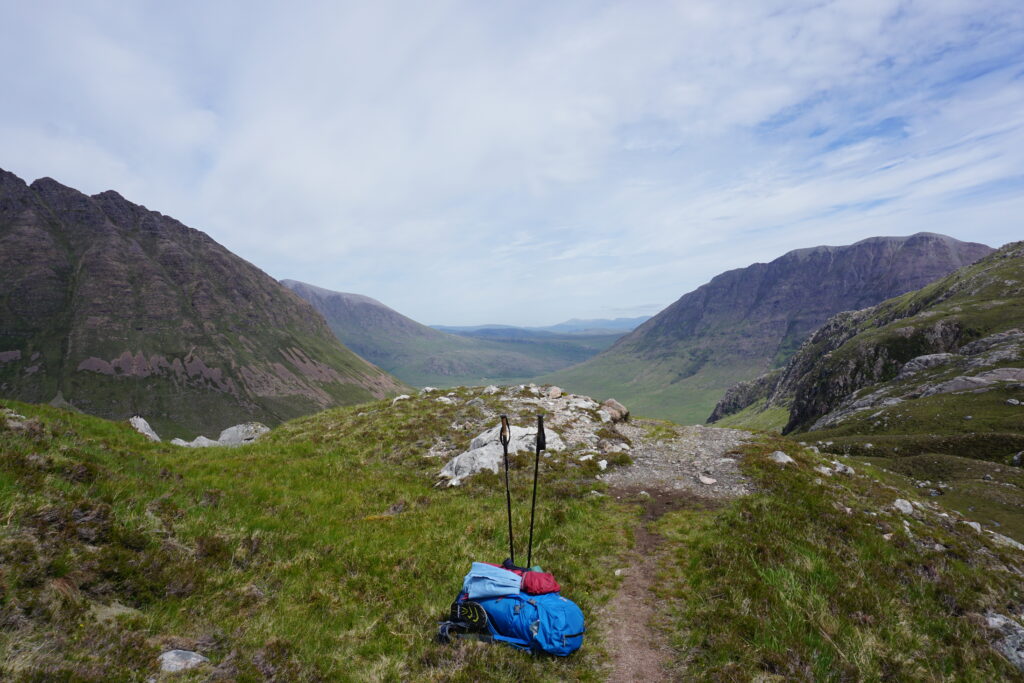
About ten years ago, so I’m told, Beinn a’ Chlaidheimh was re-measured and found to be ‘only’ 914m tall, making it a full 40cm too short to be a Munro. Since then, the Munro-baggers have begun to refer to the ‘Fisherfield Five’ instead of the Fisherfield Six, and some have given up climbing it altogether.
Which I think is rather a shame, because of the four peaks I climbed the next day, I thought it was the best one. A long pull up through scrub and heather, then a steep and rather vertiginous ascent round a craggy nose that from a distance doesn’t look like you should be able to get up it without some seriously tricky scrambling. I was on the verge of picking a different route but as I got closer the way up revealed itself, as it sometimes does. It was hard work but exhilarating with the sun beating down, culminating in an absolute bombshell of a ridge. The scale and beauty of such a day in such a place is hard even just to take in – let alone to describe on the page – and was all the sweeter just then for having missed it so much.
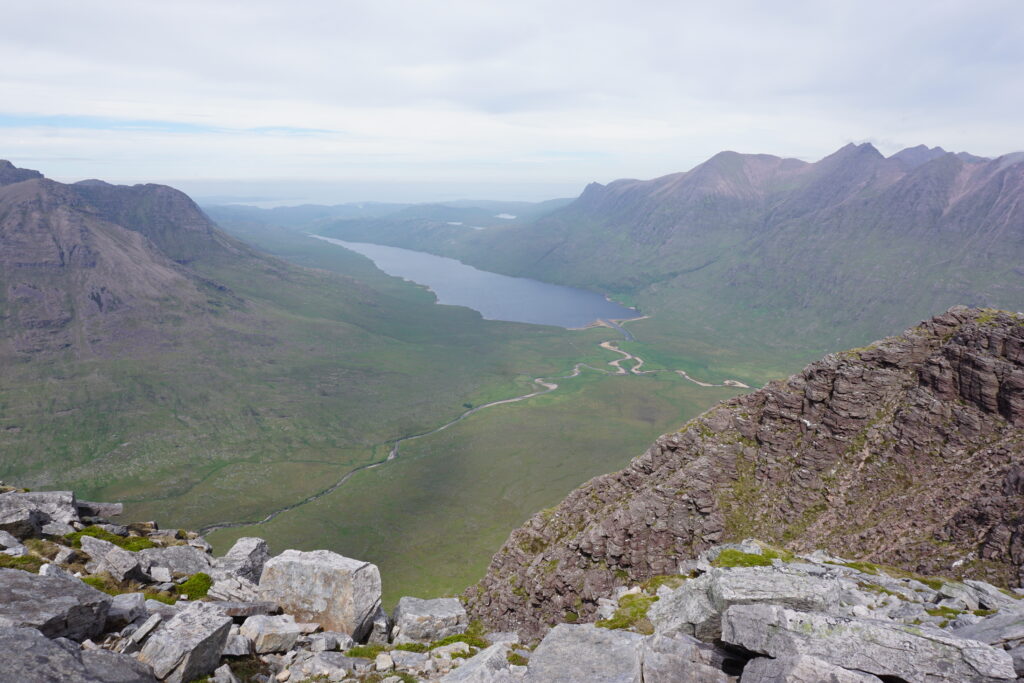
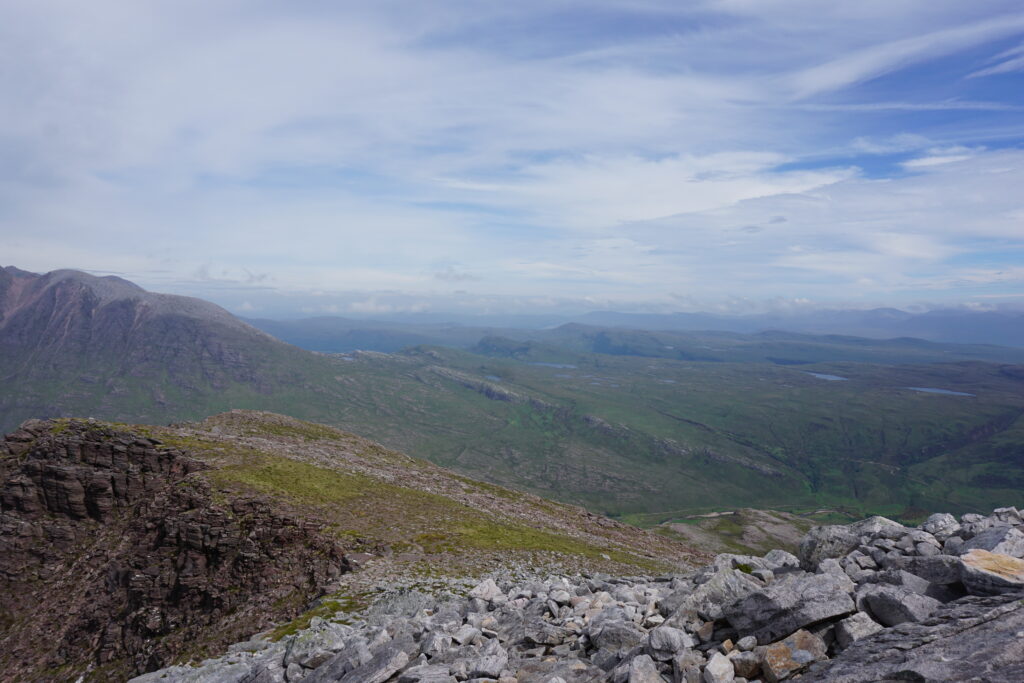
If there was one mountain I didn’t get on with quite so well it was Sgùrr Ban – a 989m heap of rough quartzite rubble that thrummed with the heat of the day and felt something akin to toiling up Mount Doom. Type two fun, I told myself, eventually reaching a summit that was in the middle of a plateau and thus not blessed with anything like the views of its substandard neighbour.
The next one, Mullach Coire Mhic Fhearchair, was much prettier. At 1019m it’s the biggest mountain on the circuit, but it feels easier than that. There’s less ascent than some of the others and the northern climb is via a steep and dusty scree zig-zag that feels a bit treacherous but actually helps you gain height very fast. I met two walkers who’d been sitting in a pub three days earlier when they saw the remarkable weather window approaching, at which point they’d extended their holiday, driven to buy some kit in Aviemore then made a beeline for Fisherfield. Those boys have the right idea, I thought.
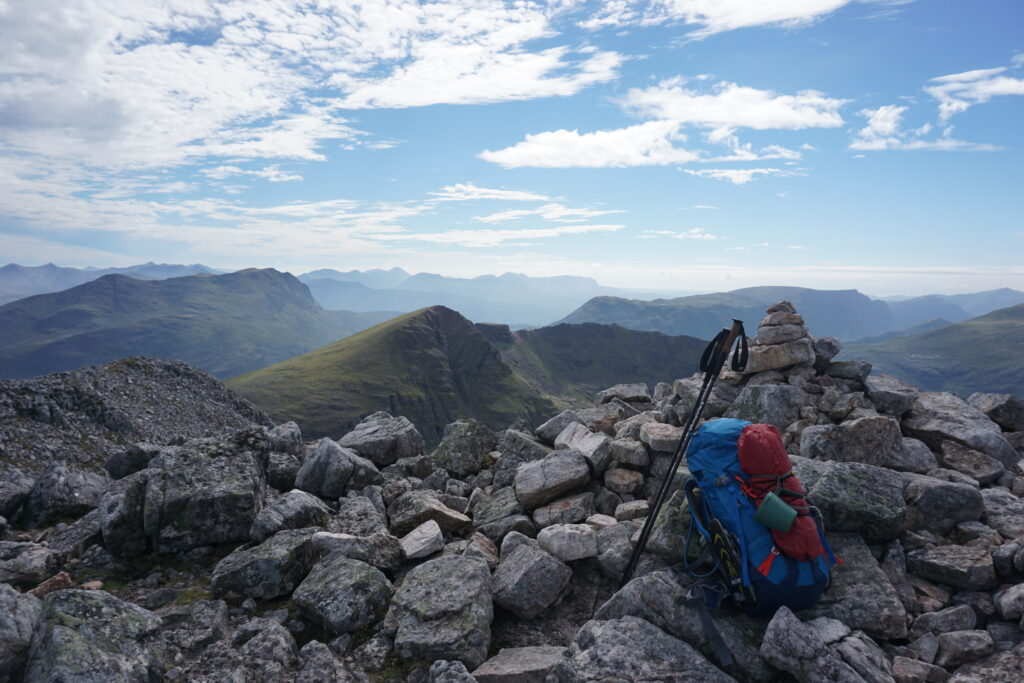
I was starting to feel a bit worn and under normal circumstances I might have called it a day, but the next mountaintop held the tantalising prospect of a high campsite. ‘Of course! The tennis court!’ Graham had said when I told him I fancied taking my time and camping up part way round the circuit. The ‘tennis court’, also sometimes called the ‘wedding cake’, is a funny-looking pancake of rock that sits across the otherwise rather toothy ridge of Beinn Tarsuinn (937m). It rests at a slight angle, but in the middle of it is a sort of shallow, grassy groove that’s flat enough to put a tent on without too much fear of rolling downhill into the abyss. Not an ideal site for a windy night, I’d suggest, but the evening was cool and still as I sat with a cup of coffee looking down into the great basin below and across to the tops that I’d already passed over.
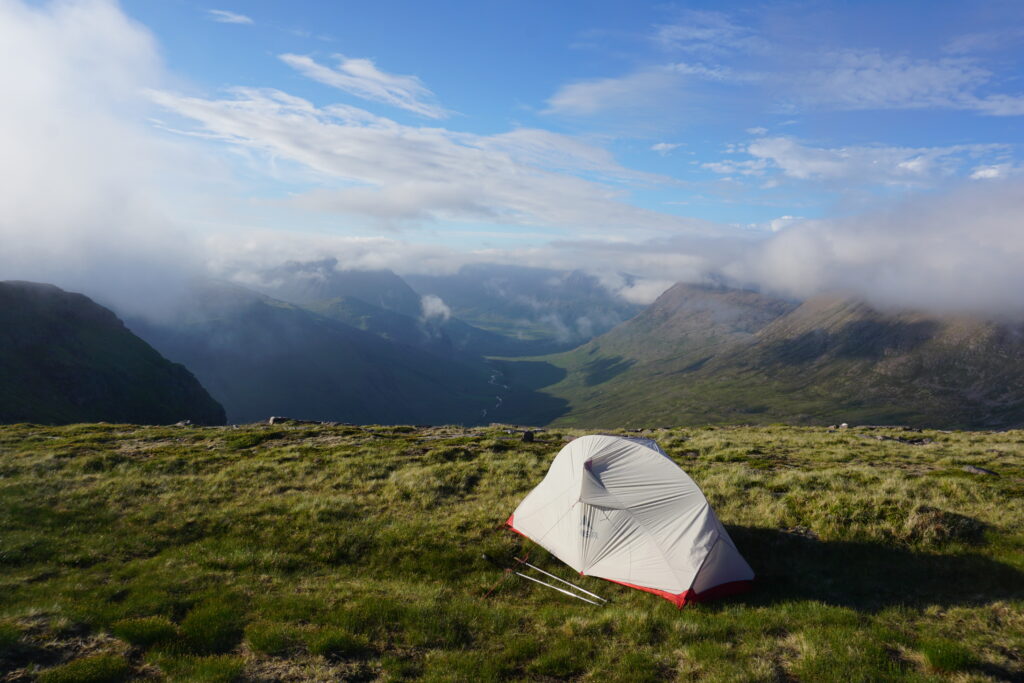
I set alarms for sunset and sunrise (10.20pm and 4.15am respectively), and in both cases opened the tent to find myself in thick cloud. Strangely, on both occasions I then felt the tent rattled by a short, stiff wind about five minutes later, and peeked out again to discover that the clag had been blasted clear of me and pushed downward into the most glorious cloud inversions. At night I sat in the last of the orange glow watching the next-door peak of A’ Mhaighdean swaddled in wool, and the following dawn I stood on the edge of the plateau and looked down on a sea of swirling white, dusted with golden light, the peaks cresting out of it like islands.
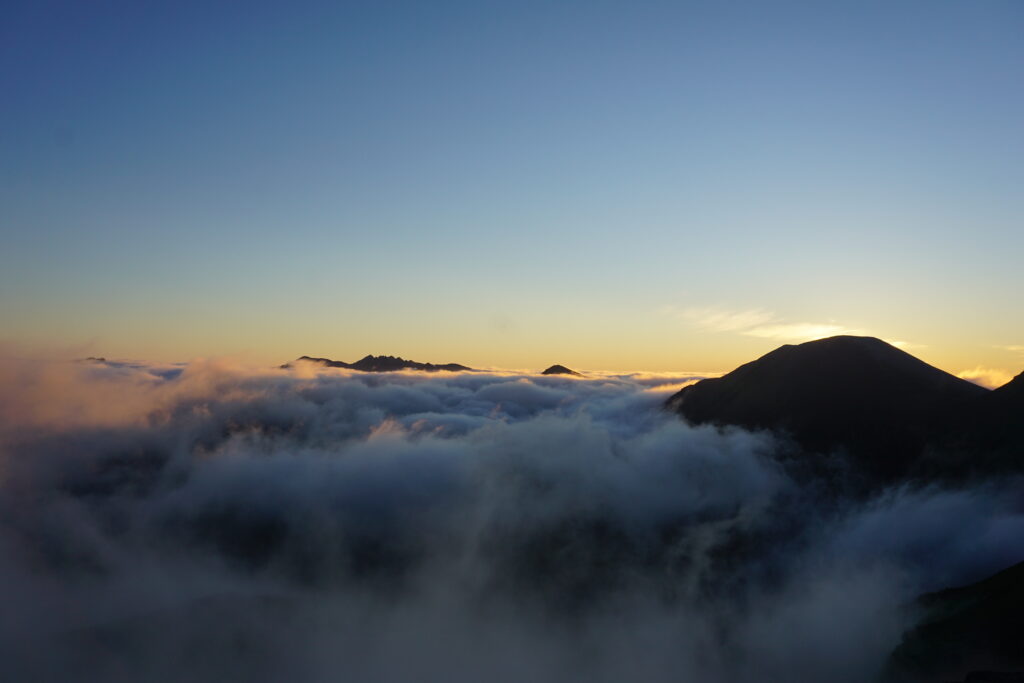
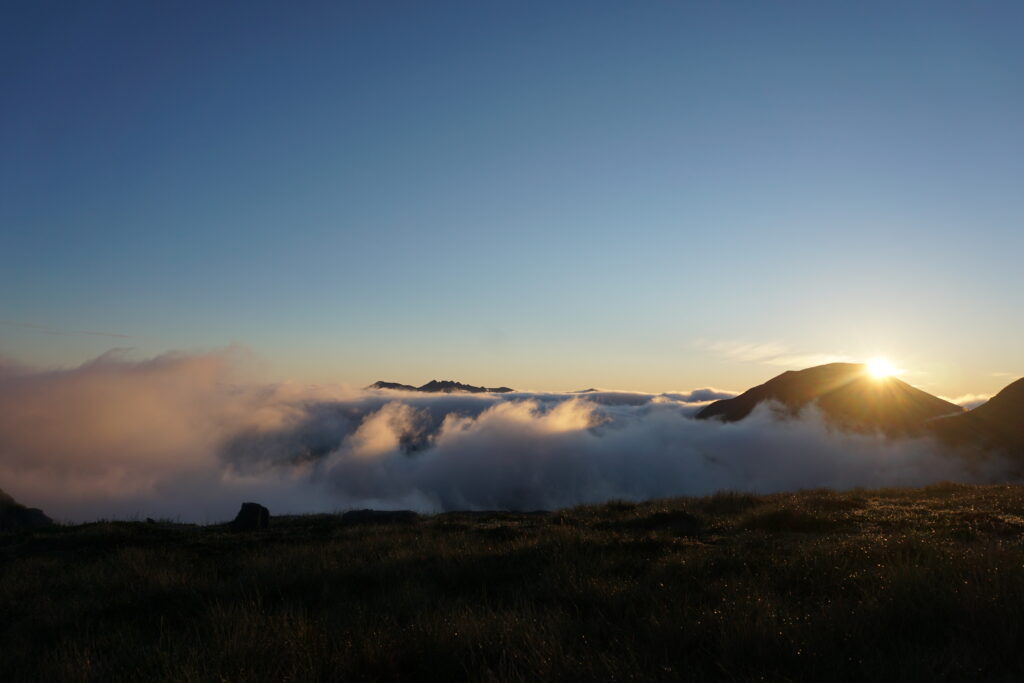
Obviously I then went back to bed. Arising at a more civilised hour, I scrambled along the ridge, down the other side then up and over the mighty A’ Mhaighdean (967m). Allegedly the remotest Munro, it’s a long but relatively gentle ascent (at least compared to its neighbours) that transforms into an extraordinary eagle’s nest viewpoint with sheer cliffs that plunge down into Dubh Loch nearly 800 metres below. Looking out, I could see Fionn Loch, the edge of the causeway that I would need to cross back over, and Poolewe way off in the distance on the shore of Loch Ewe. The entire rest of my day’s walk laid out ahead of me.
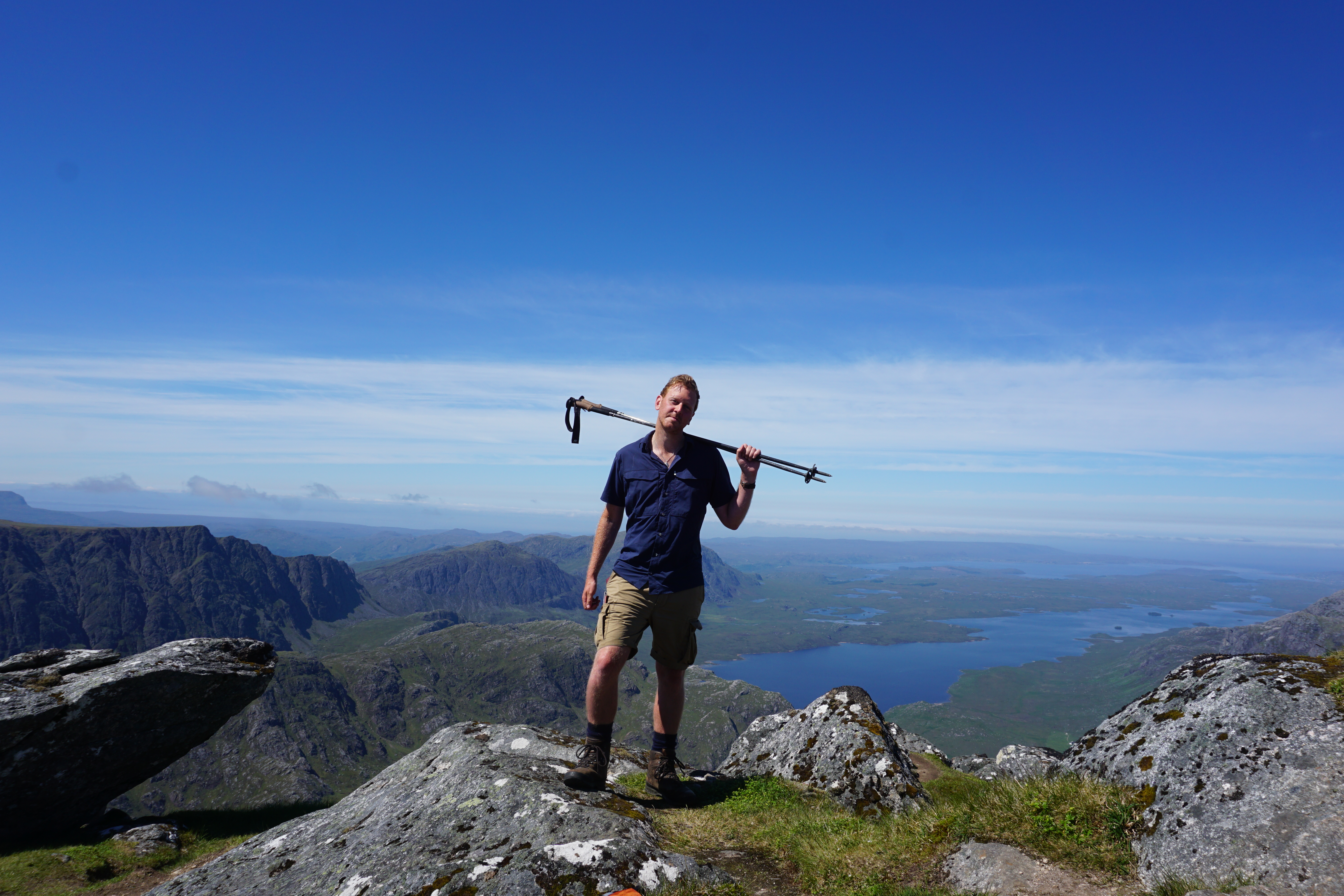
The last of the Big Six, Ruadh Stac Mòr, would need to wait for another trip. At 1pm and with a seven-hour walk-out ahead, time had run out, and I suppose it’s always good to leave yourself a bit of unfinished business.
It felt a long trek out and I could see why a lot of people ride the first 15 or so kilometres in on mountain bikes and leave them at the foot of the pass. As the afternoon wore on, a handful of such bikers zipped past on their way home with a wave and a friendly word or two. A Glaswegian with a Sex Pistols tattoo who I’d met earlier in the day pulled up for a chat, apologising that he was all worn out after a 12-hour day so he couldnae gie me a backie.
I eventually plodded into Poolewe campsite sometime around five past eight at night, feeling a shade weary. The site was full and the cut-off time for new arrivals was 8pm, but a kind site warden made me welcome all the same and found me a nice spot with a view of Loch Ewe. It’s rather reassuring to know that in these times of pre-booking mania, campsite staff are still setting a bit of space aside for passing backpackers.
For my last couple of days, I parked up near Firemore Beach then donned my pack again and walked about three hours to the secluded bay at Camas Mòr (yet another of Graham’s recommendations). It was a bit of a scramble down the cliffs but apart from a couple of sea kayakers who’d pulled in for the night I had pretty much the whole beach to myself. I pitched my tent on the grass, got a brew on, and spent the next 24 hours snoozing, swimming and reading a 1970s Len Deighton spy novel about a defecting Russian ufologist.
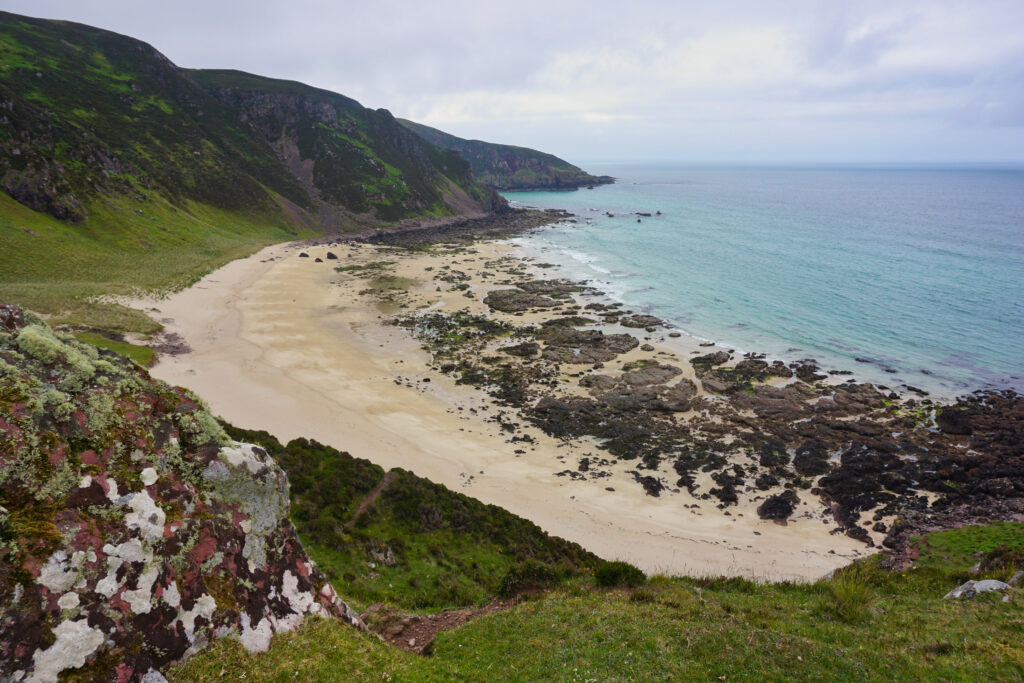
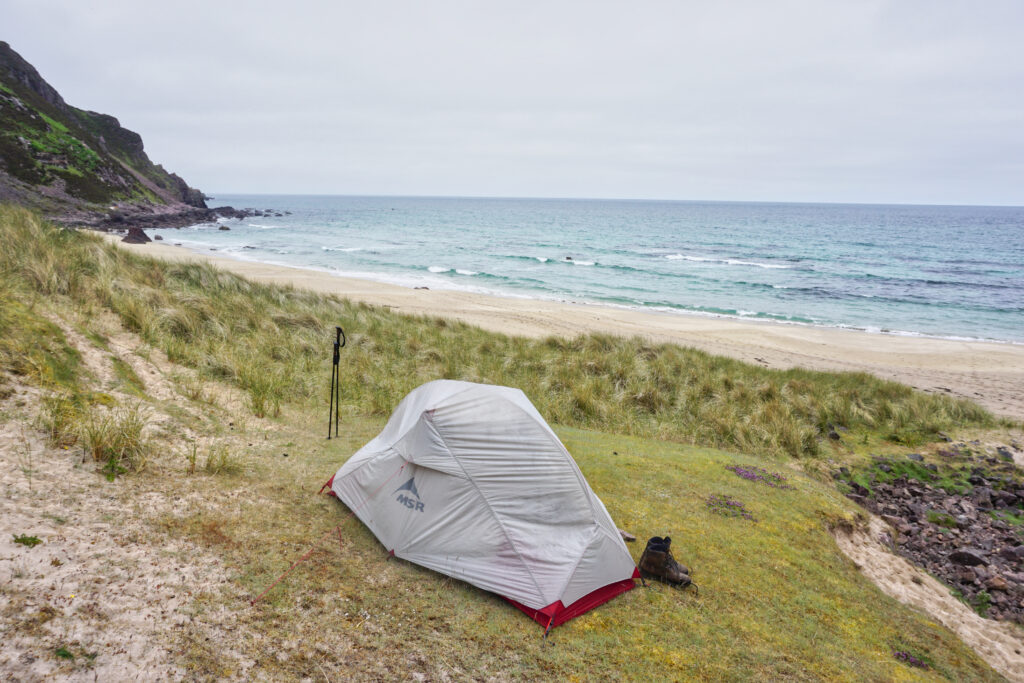
Eventually I walked back out again, had a bowl of stew and a couple of pints at the pub in Poolewe, and prepared for a long drive home the next morning.
My little Fisherfield jaunt was a grand adventure but it also felt ever so slightly like the beginning of a return to life. Over the past year and a half, a thousand saccharine TV adverts, persuasive articles and social media posts had almost convinced me that we should be able to find joy in the little things in life without having such high expectations. And I’m sure we should, but for me at least, that feeling of being high-up in beautiful places – pack on your back, boots on your feet, occasionally lost or tired out, picking your routes and following your moods – is on a whole different scale of happiness, and life simply wasn’t the same without it. I honestly couldn’t tell you why I do it, but I love it, and have missed it, and even just a short trip was enough to make me start to feel like myself again.
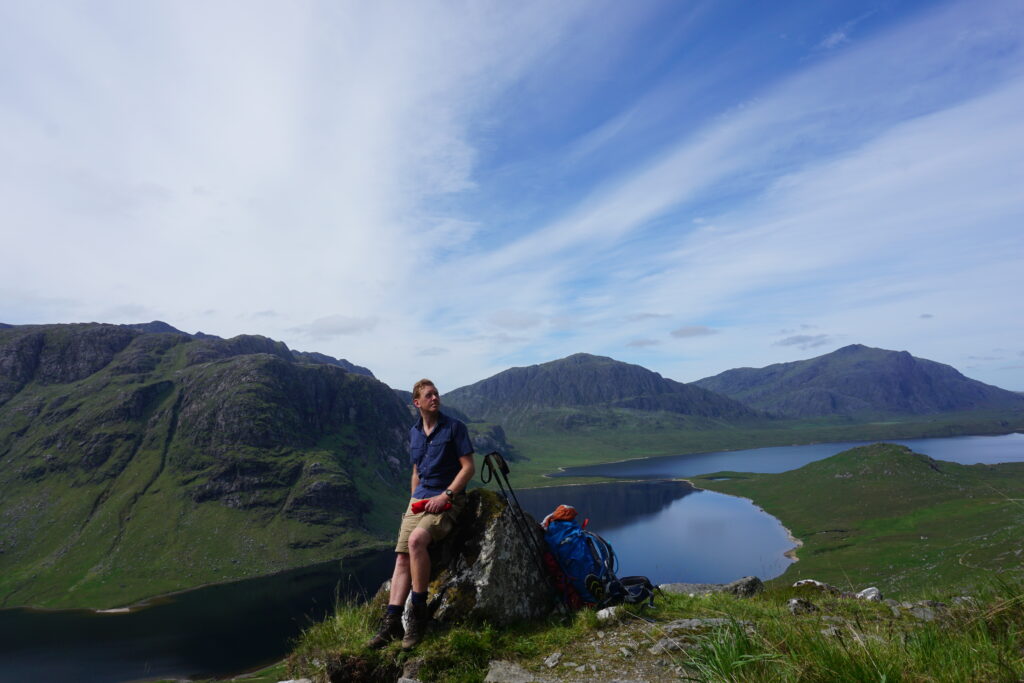
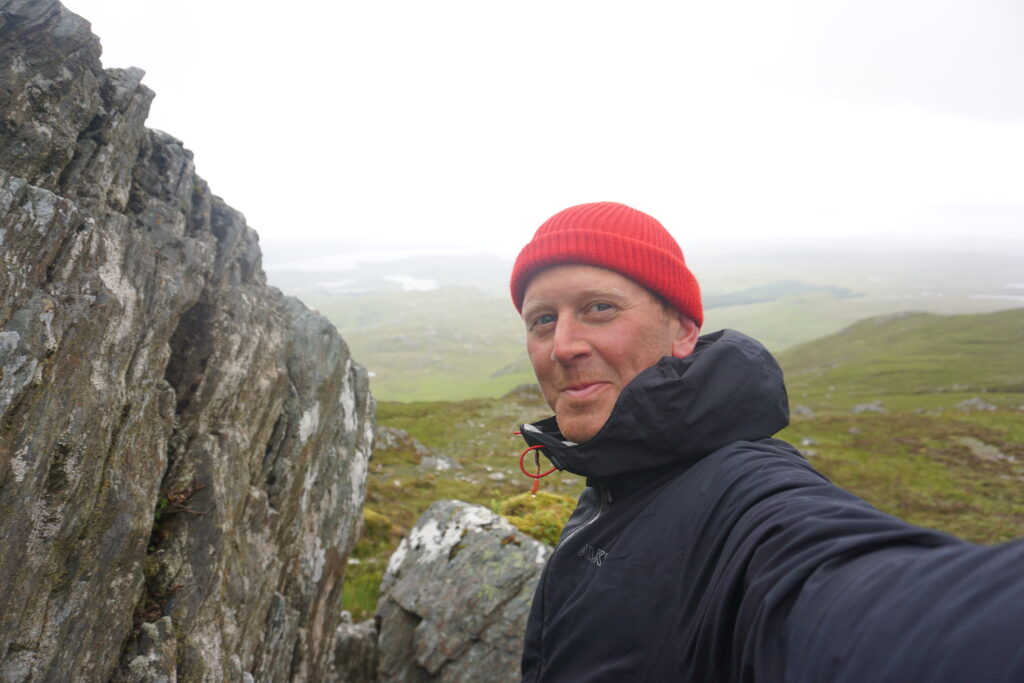

Test
Joly
Confirmed
mark